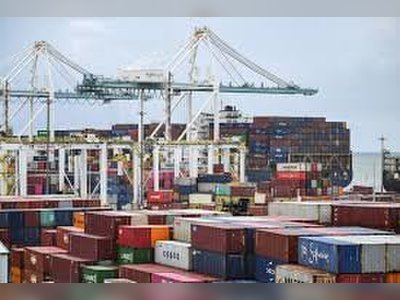
Let's care more for our elderly during coronavirus
The predicament is changing older people’s daily routines, the care and support they receive, their ability to stay socially connected, and how they are perceived.
Older people are being challenged by requirements to spend more time at home, lack of physical contact with other family members, friends, and colleagues, temporary cessation of employment and other activities; and anxiety and fear of illness and death – their own and others. It is therefore important that we create opportunities to foster healthy aging during the pandemic.
“The pandemic is causing untold fear and suffering for older people across the world. Beyond its immediate health impact, the pandemic is putting older people at greater risk of poverty, discrimination, and isolation.
It is likely to have a particularly devastating impact on older people in developing countries,” UN Secretary-General António Guterres said in a message on the occasion of International Day of Older Persons, which is observed globally on October 1.
The year 2020 marks the 30th Anniversary of the International Day of Older Persons. This year has also seen an emergence of COVID-19, which has caused upheaval across the world.
Considering the higher risks confronted by older persons during the outbreak of pandemics such as COVID-19, policy, and programmatic interventions must be targeted towards raising awareness of their special needs.
Recognizing their contributions to their own health and the multiple roles they play in the preparedness and response phases of current and future pandemics is also important.
The International Day of Older Persons 2020 will highlight the role of the health care workforce in contributing to the health of older persons, with special recognition of the nursing profession, and a primary focus on the role of women - who are relatively undervalued and in most cases inadequately compensated.
“Acting on the strategy is a means for countries to implement the 2030 Agenda for Sustainable Development and ensure that every human being regardless of age will have an opportunity to fulfill their potential in dignity and equality,” World Health Organization Director-General, Tedros Adhanom Ghebreyesus, has said.
The composition of the world population has changed dramatically in recent decades. Between 1950 and 2010, life expectancy worldwide rose from 46 to 68 years.
Globally, there were 703 million persons aged 65 or over in 2019. The region of Eastern and South-Eastern Asia was home to the largest number of older persons (261 million), followed by Europe and Northern America (over 200 million).
Over the next three decades, the number of older persons worldwide is projected to more than double, reaching more than 1.5 billion persons in 2050. All regions will see an increase in the size of the older population between 2019 and 2050.
The largest increase (312 million) is projected to occur in Eastern and South-Eastern Asia, growing from 261 million in 2019 to 573 million in 2050. The fastest increase in the number of older persons is expected in Northern Africa and Western Asia, rising from 29 million in 2019 to 96 million in 2050 (an increase of 226 percent).
The second-fastest increase is projected for sub-Saharan Africa, where the population aged 65 or over could grow from 32 million in 2019 to 101 million in 2050 (218 percent).
By contrast, the increase is expected to be relatively small in Australia and New Zealand (84 percent) and in Europe and Northern America (48%), regions where the population is already significantly older than in other parts of the world.
Among development groups, less developed countries excluding the least developed countries will be home to more than two-thirds of the world’s older population (1.1 billion) in 2050.
Yet the fastest increase is projected to take place in the least developed countries, where the number of persons aged 65 or over could rise from 37 million in 2019 to 120 million in 2050 (225%).
Iran to have oldest population in region by 2050
Iran will have the highest rate of elderly citizens by the next thirty years, deputy health minister Alireza Raeisi, has said.
The country is fast moving towards an aging population with a shrinking birth rate each year.
Nicholas Eberstadt, the Henry Wendt Chair in Political Economy at the American Enterprise Institute (AEI), wrote in an article earlier in July that the fertility rate in Iran has dropped by 70 percent over the past 30 years, which has been the highest decline in human history.
“Over the past four decades, life expectancy has increased from 50 years to more than 70 years, 21.4 years for men, and 23.4 years for women.”
According to the statistics, the elderly constitute 9.26 percent of the country’s population which will reach up to 30 percent over the next three decades.
Elderly women outnumber elderly men by a ratio of 100 to 97.6, he said, adding, while the economic participation rate of the elderly is about 12.2 percent.
According to the Iranian Welfare Organization, out of 720 people studied, about 285 were elderly with depression, and between 8 and 10 were diagnosed with dementia.
The national document on older persons, the roadmap showing the way for better planning for the elderly, unveiled on October 1st, 2019.
Non-medical service delivery, designing health care centers based on the elderly needs, updating service packages, active participation in osteoporosis control, monitoring mental health and nutrition of the elderly, designing tool to screen bone density and fractures, providing them treatment services at home, and elderly-friendly pharmacy was among the Ministry's programs for this part of the society.
With the onset of COVID-19, isolation is intensified, so that elderly should remain active and continue social communication, and we must increase care for them more than before. Therefore, the responsible bodies are committed to raise awareness, promote culture, and implement more care programs in this regard.











